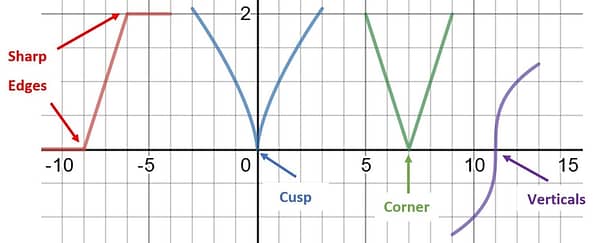Is it Differentiable?
Before you find a derivative of a function, you must first confirm that it is actually differentiable. Just like with continuity, most functions you will run into are differentiable at most places ( x-values ), and will only be not differentiable at a small set of specific x-values .
Meaning: Differentiable
In order to be differentiable a function must have two properties.
It must be BOTH : Smooth and Continuous
– Smooth meaning there are no sharp edges, cusps, corners, or verticals.

– Continuous meaning that the function must be continuous at the x-value that you would want to apply the derivative.
Note :
– Whenever a function fails either one of these criteria at a specific x-value it is not differentiable at that specific x-value . It can still be differentiable at every other x-value .
– The other side of that is that if someone tells you a function is differentiable, then you are guaranteed that the function has these two properties. It is both smooth and continuous. This is often used in concept questions to quietly provide you the information that your function is continuous.
